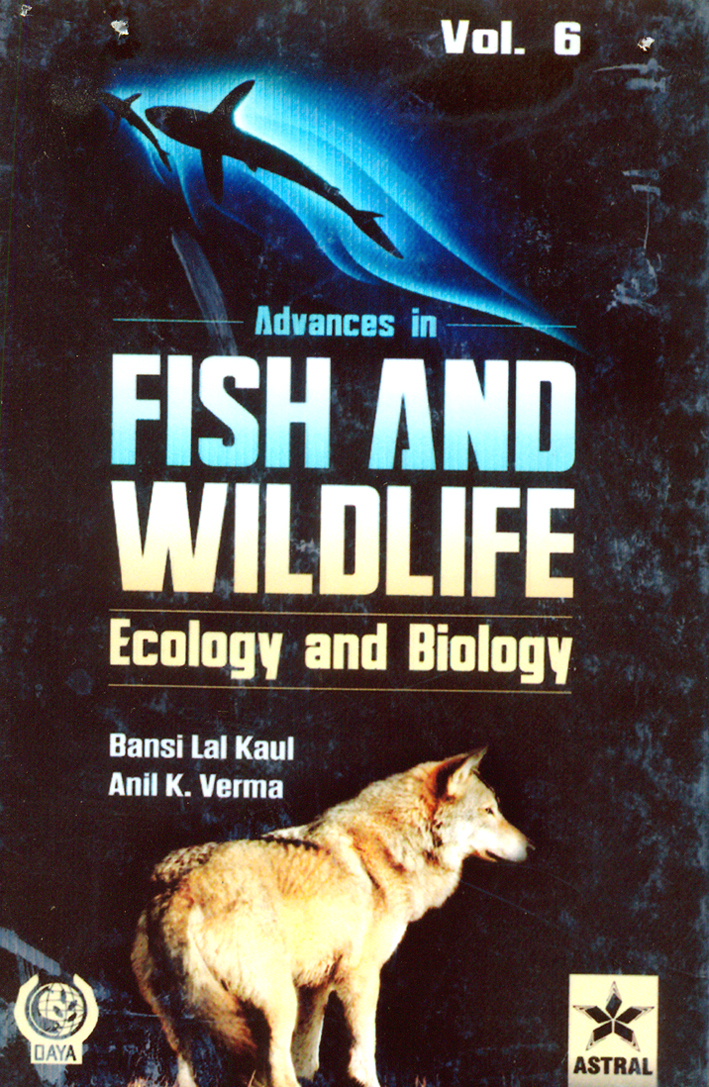Prof P L Koul
This volume is dedicated to world known Omithologist of Kashmir,
Late Samsar Chand Koul Volume 6 has a panel of 38 contributors and an Editorial board comprising of leading Biologists across the globe.
Prof Dr B L Kaul in the preface writes about the green houses gases, their impact on our planet and the commitment of the comity of nations to limit the carbon emissions by 2020.
Master Samsar Chand Koul (1883-1977) has contributed much in the field of Ornithology and Plant Taxonomy and as such carved a niche for himself in National Geographical Society, Washington, Royal Graphical Society Canada and Society of World Bird Watchers England in as early as 1950. While the rest of the world was trying to understand the importance of birds, ecology and environment, Masterji had laid the foundations of these fields in Kashmir. But the importnace of his work was not realized and little was done to consoidate in this field for the overall betterment of Jammu & Kashmir State.
This volume has two sectios 1. Fish and Limnology with Twelve chapters and 2. Wildlife with seven chapters.
In Fish and Limnology section
Chellappa, NT et al write about the influence of aquatic macrophytes on the phytoplankton structure and fish communitis in a shallow Tropical Reservoir situated in the State of the Rio Grand do Norte, Brazil and this work can help us in maintaning and regulating the health of our water bodies.
Prasanti Mishra et al discuss the comparative aspect of seed production of the giant fresh water prawn macrobrachium gangeticum (BATE) in Natural sea water and Brine solution. This will play an important role in increasing the productio of fresh water prawns which are an important source of quality proteins.
Kaul and Dogra have studied the inland fisheries in rainfed areas of Jammu and this study will enahcne the fish productivity of our rain fed ponds in the Kandi areas of Jammu.
M Venkateshwarlu et al have studied the water quality assessment of Santhekadur water body, Shimoga Karnataka with relationship to it zooplankton diversity.
Limnology of Experimental macrophyte floating islands in a high altitude reservoir of Valle De Bravo Mexico has been studied by Pedro Remirez-Gracia et al and according to these authors the reservoir has developed a tendency towards eutrophication or what we can call degradation.
Effect of different nutrient media on the relative growth, Brood Size and population Dynamics of Moina Macrocopa has been studied by Satinder Kour, Moina is rich in proteins and is excellent food organism for fish and fry with small mouths.
AK Verma, R Mushtaq and Anuradha Gupta have studied the fish Diversity in a lotic environment, Munawar Tawi of Rajouri and it has been observed that the population of biotic forms especially the fish fauna is declining which is a matter of great concern.
Shahnawaz Ahmad and M Venkateshwarlu have studied the ornamental and food fish diversity of Tunga and Bhadra rivers of the Western Ghats in Karnataka and have reported 77 species most of which have been categorized as food fishes and and the authors have recommended for effective and sustainable conservation measures to save the fish fauna.
Anil Khajuria has studied the Diel Fluctuations of some Physio-Chemical paramtes and tropical satus of Lake Mansar and it has been observed that the lake is moving faster towards eutrophication which is a matter of concern.
Isharat Bashir et al have worked on Zooplankton diversity of Sader Mouj reservoir in Budgam district.
S Chaellappa et al have given a review on the marine fish parasites of Rio Grande Do Norte North Eastern Brazil.
Kanwar Narain, Raina M K and PL Koul have reported parasite Myxidium from the Gall bladdar of the fish Puntius chola (Hamilton) from Jammu.
In the Wildlife section Raheela Mushtaq and Anil K Verma have reported the urban impact on thw ater quality and the Macrobenthic inverebrate Fauna of River Tawi.
BL Kaul in bhis article “Feathers are ruffled by winds of change in Kashmir the valley of birds’’ has given the impact of the use of Diclofenac to treat domestic animals onWildlife especially the birds.
E A Jayson has worked on the Avian Diversity of Eringole Sacred Grove in the Western Ghats of Kerala.
Observation on Feeding and Breeding Biology of the Brown Rock Chat Cercomela fusca (Blyth) in Jammu city have been made by Dr B LKaul while Sudhakar Kar has studied the status and conservation of endangered Black Buck Antilope Cervicapra of Odisha India.
The last two papers are on the Breeding Biology of Red Wattled Lapwing Vanellus indicus by Vasudha Chaudhari and the wetland Avifauna of Kundavada lake, Davanagere Distt Karnataka by M N Harisha, B Hosetti and Shahnawaz Ahmed.
To conclude I would like to State that this planet is like a space ship with limited resources and we can squander these only to our own detriment and we cannot afford to destroy the biotic and abiotic compoents of earth which have evolved over millions of years of natural experimentation. A species once lost is lost forever and no amount of money can retrieve it. It is our duty to preserve the flora, fauna and their natural habital including the water bodies especially the ponds and the nallahas which are being destroyed gradually.
This volume will help in understanding various aspects of Ecology and Environmental studies and will prompt the younger generation to work in the field to help conserve biodiversity.


